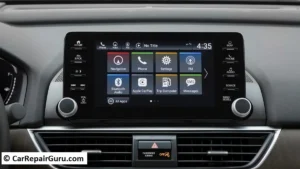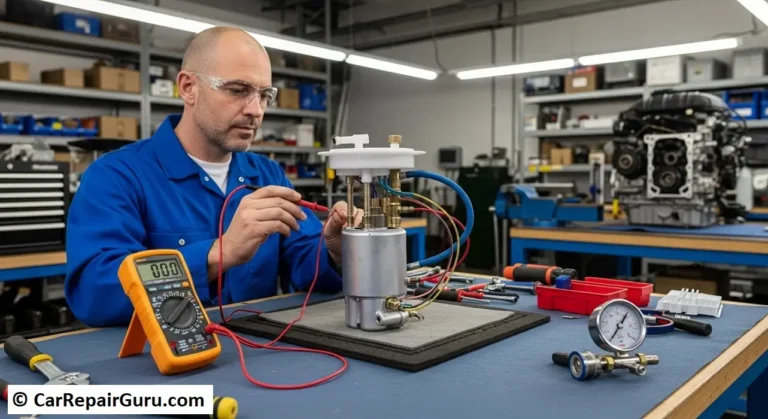
cars are transforming into smarter and more efficient modes of transportation. A prime example of this evolution is the integration of advanced features designed to enhance both safety and comfort within the vehicle. Among these groundbreaking features, the infotainment system stands out as a vital element that enriches the overall driving experience. One such feature, often overlooked but increasingly commonplace, is speed sensitive volume control. This article takes a deep dive into this innovative technology, exploring its history, functionality, benefits, and how it seamlessly integrates with the modern driving experience.
Understanding Speed Sensitive Volume Control: Elevating Your Audio Experience

Driving today is less about simply getting from point A to point B and more about enjoying the journey. Modern vehicles are equipped with sophisticated features that work in harmony to elevate the driving experience. Among these features, the infotainment system, often considered the heart of in-car entertainment, plays a pivotal role in enriching this experience. A key component of this system, speed sensitive volume control (also known as speed-compensated volume, speed-dependent volume control, or automatic volume control), stands out as a testament to this commitment to driver comfort and convenience.
Gone are the days of manually adjusting the audio volume while driving, a task that could be distracting and potentially dangerous. Speed sensitive volume control addresses this challenge by automatically adjusting the audio system’s volume based on the vehicle’s speed and the level of external noise. As the car accelerates and external noises like wind, tire, and engine sounds increase, the system intelligently raises the volume to ensure the audio remains clear and audible. Conversely, as the car slows down and external noises diminish, the system subtly lowers the volume to maintain a comfortable listening level.
This intelligent adaptation ensures a balanced and enjoyable audio experience, allowing drivers and passengers to fully appreciate their favorite music, podcasts, or audiobooks without the distraction of constantly fiddling with the volume knob. The result? A safer and more relaxed driving experience.
A Look Back: The Evolution of Speed Sensitive Volume Control
The need for a system that automatically adjusts audio volume in response to changing driving conditions was recognized decades ago. The late 1980s saw the emergence of this technology, with vehicles like the 1987 Ford Thunderbird and the 1988 Pontiac 6000 being among the first to incorporate this innovative feature. While rudimentary in their initial iterations, these early systems marked the beginning of a new era in in-car audio technology.
Let’s delve deeper into the historical timeline of this transformative technology:
- Early Innovations (Late 1980s – Early 1990s): Pioneered by manufacturers like Ford and Pontiac, these early systems primarily focused on adjusting volume levels in response to changes in vehicle speed. While their functionality was basic, they laid the foundation for the sophisticated systems we see in modern vehicles today.
- Technological Advancements (Mid-1990s – 2000s): This era witnessed significant enhancements in noise-canceling technology and audio processing capabilities. The integration of more sophisticated algorithms allowed these systems to analyze ambient noise levels with greater precision, resulting in more accurate and seamless volume adjustments.
- Seamless Integration & Enhanced Performance (2010s – Present): Modern speed sensitive volume control systems represent the pinnacle of this technology’s evolution. They leverage advanced noise-sensing technologies and sophisticated algorithms to analyze a broader range of factors, including vehicle speed, wind noise, road surface noise, and even engine noise, to deliver a truly immersive and adaptive audio experience. The strategic placement of microphones within the vehicle cabin further enhances the system’s ability to monitor and respond to changes in the acoustic environment.
Benefits of Speed Sensitive Volume Control: Why You’ll Love It

The integration of speed sensitive volume control into modern vehicles brings with it a plethora of benefits that significantly enhance the overall driving experience:
- Consistent & Balanced Audio: By dynamically adjusting the volume in response to external factors, this technology ensures a consistent and balanced audio experience. No longer will you find yourself straining to hear your favorite tunes over road noise at high speeds or feeling blasted by excessively loud music when the car is stopped.
- Enhanced Safety & Reduced Driver Distraction: The automatic nature of this feature eliminates the need for drivers to manually adjust the volume, a task that can be distracting, especially at higher speeds or in heavy traffic. By mitigating distractions, speed sensitive volume control contributes to a safer driving environment.
- Personalized Listening Experience: Many systems offer customization options, allowing drivers to fine-tune the sensitivity of the volume adjustments to their liking. This ensures the system adapts to individual preferences, creating a more personalized and enjoyable listening experience.
- Improved Focus & Reduced Fatigue: Consistent audio levels contribute to a more relaxed and less fatiguing driving experience, particularly on long journeys. With fewer distractions and a more balanced audio environment, drivers can better focus on the road, leading to a safer and more enjoyable journey.
How to Enable Speed Sensitive Volume Control in Your Car

While the process of activating speed-sensitive volume control may differ slightly across car makes and models, the steps outlined below provide a general guideline:
- Access the Infotainment System: Begin by turning on your car’s infotainment system. The location and method of accessing this system may vary, but it’s typically done through a touchscreen display or physical buttons on the dashboard.
- Navigate to Audio Settings: Once inside the infotainment system menu, look for the “Settings” or “Setup” option. Within this section, locate and select “Audio” or “Sound” to access the audio settings menu.
- Locate and Activate Speed Sensitive Volume Control: Look for an option labeled “Speed-Sensitive Volume,” “Speed Compensated Volume,” “Automatic Volume Control,” or something similar within the audio settings menu. Once you find it, select it to activate the feature.
- Adjust Sensitivity (Optional): Some systems allow you to customize the sensitivity of the volume adjustments. If this option is available, you can typically choose from low, medium, or high sensitivity levels to fine-tune the system to your preference.
- Save Your Settings: After making the desired changes, be sure to save your settings. Some systems will automatically save your adjustments, while others may require you to manually confirm and save the changes.
Tips for Successful Activation:
- Consult Your Owner’s Manual: If you encounter difficulties locating the necessary settings or activating the feature, consult your car’s owner’s manual. The manual will provide detailed and model-specific instructions.
- Seek Assistance from Your Dealership or Manufacturer: If you’re unable to activate the feature yourself or have any questions, don’t hesitate to contact your car dealership or the manufacturer’s customer support for assistance.
Popular Car Brands and Their Speed Sensitive Volume Control Systems
Here are some of the leading car manufacturers and how they have integrated speed-sensitive volume control technology into their vehicles:
- Mercedes-Benz: Known for their luxurious and tech-savvy vehicles, Mercedes-Benz offers a sophisticated speed sensitive volume control system as part of their COMAND infotainment system.
- BMW: BMW vehicles equipped with the iDrive infotainment system typically feature a well-regarded speed-sensitive volume control system that integrates seamlessly with their overall audio experience.
- Audi: Audi’s MMI (Multi Media Interface) infotainment system commonly includes a speed-sensitive volume control feature, ensuring a balanced and enjoyable audio experience.
- Lexus: Lexus vehicles, renowned for their focus on comfort and refinement, often come equipped with a sensitive and well-calibrated speed sensitive volume control system as part of their infotainment offerings.
- Cadillac: Cadillac’s CUE (Cadillac User Experience) infotainment system commonly incorporates speed-sensitive volume control technology, adding to the overall luxurious and technologically advanced feel of their vehicles.
Frequently Asked Questions (FAQ) About Speed-Sensitive Volume Control
1. Does speed-sensitive volume control affect all audio sources in my car?
Yes, in most vehicles equipped with this feature, speed-sensitive volume control typically affects all audio sources, including radio, CD/DVD players, Bluetooth audio streaming, and auxiliary input.
2. Can I adjust the sensitivity of the volume adjustments?
Many speed-sensitive volume control systems offer customization options, allowing you to adjust the sensitivity of the volume changes in response to speed and noise levels. This allows you to personalize the system’s response to your liking.
3. Is it possible to temporarily disable speed-sensitive volume control?
While not all systems offer this option, some vehicles may allow you to temporarily disable the feature if you prefer to manually control the volume for a specific period. However, it’s generally recommended to keep the feature enabled for optimal safety and listening experience.
4. Does my car have to be equipped with a high-end sound system for speed-sensitive volume control to work?
No, speed sensitive volume control is not typically limited to vehicles with premium sound systems. Many vehicles, even those with standard audio systems, come equipped with this feature.
Conclusion: Embracing the Future of In-Car Audio
As technology continues to advance at an unprecedented pace, we can expect even more innovative features to enhance our driving experiences. Speed-sensitive volume control, once a novel concept, is now becoming increasingly commonplace, highlighting the automotive industry’s commitment to driver comfort and safety. By seamlessly adapting to changing driving conditions, this technology ensures that drivers and passengers can enjoy their favorite audio content without compromising safety or experiencing listening fatigue. So the next time you’re behind the wheel, turn up the tunes, sit back, and let your car’s intelligent audio system take care of the rest. You’ll arrive at your destination relaxed, refreshed, and thoroughly entertained.
Key Takeaways
- Speed sensitive volume control is an intelligent feature that automatically adjusts audio volume based on vehicle speed and external noise, ensuring a consistently balanced listening experience.
- The technology has evolved significantly since its inception in the late 1980s, with modern systems boasting advanced noise-sensing capabilities and sophisticated algorithms for seamless audio adaptation.
- Benefits of speed sensitive volume control include enhanced safety, reduced driver distraction, a more personalized listening experience, and reduced fatigue on long drives.
- Most modern vehicles equipped with infotainment systems offer some form of speed-sensitive volume control, and the feature can typically be activated and customized through the audio settings menu.
Call to Action
Ready to experience the convenience and comfort of speed sensitive volume control for yourself? Explore the latest vehicles equipped with this innovative feature and elevate your driving experience to a whole new level of audio enjoyment. Contact your local dealership or visit a manufacturer’s website to learn more about how this technology is transforming the way we listen to music and audio content on the road.





